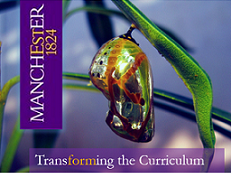Education for Sustainability Into A Primary School: Biodiversity Conservation Activities
Biodiversity, as one of the important parts in sustainability, has getting more and more attention. My learning context is a primary school near Poyang Lake in China, and the activity is using place-based learning to raise pupils’ awareness of biodiversity conservation and sustainability. Here, I will explain how I have thought about ways of applying place-based learning into educating for sustainability in my learning context.
In 1987, World Commission on Environment and development defines “sustainability” as the idea of the development which “meets the needs of present without compromising the ability of future generations to meet their own needs”, which means sustainability is for long-term development. It includes many aspects. One of the key issues is biodiversity. The term “biodiversity” combines the words “biological” and “diversity” ; broadly, it can be defined as species’ diversity at the level of planetary.
It has been addressed that biodiversity is a vital factor for human-being to survive; it supports the life of human by providing natural resources and influences local ecosystem, the security of food, the patterns of migration, etc. (Victor Nolet, 2015). It’s obvious that biodiversity can influence the sustainability of environment; at the same time, we can see that it can also affect human activity. Since society is made up by human, and the economy is mainly determined by activities of human, biodiversity also have an impact on the sustainability of society and economy.
However, nowadays, the problem of biodiversity loss has been more and more serious. For instance, due to the urbanization, the habitats sharply decrease which pose a serious threat to many kinds of flora and fauna; people lack of awareness of biodiversity conservation, because they believe it is far from their lives. Thus, for the development of sustainability, the education for conservation of biodiversity should be taken into account.
If we want people to protect something, we need to let them care about it first. Thus, students only have awareness of biodiversity conservation after they know the beauty of biodiversity and have a love of nature. In our project, the students are year 5 and year 6 primary school students who are from urban families. Due to the urbanization, most students grow up in cities where there are all kinds of buildings and houses. Which raises the question: how can we build students’ emotional connection with biodiversity?
To answer this question, I have read relevant literature and useful projects to help me. Among them, the book Educating for sustainability written by Victor Nolet (2015) and an article named Both Direct and Vicarious Experiences of Nature Affect Children’s Willingness to Conserve Biodiversity (http://dx.doi.org/10.3390/ijerph13060529) have inspired me a lot and helped me to develop my own ideas of the project.
There is a section in the book Educating for sustainability called “powerful pedagogies”, which introduces many approaches of learning. Among them, one approach named “place-based learning” interests me. Place-based learning refers to a learning method that relate local community to the learning process; it combines “elements of inquiry-based learning, experiential learning and service learning” (Nolet, 2015, p.139).
The advantage of this approach is that students can actually experience the environment and have a better understanding of the connect between global issues and their living context. In addition, they can develop the ability of questioning and finding answers by themselves through exploring the local environment (Amy B. Demarest, 2014 ). After having a basic understanding of placed based learning, I read the article Both direct and vicarious experiences of nature affect children’s willingness to conserve biodiversity to help me have a better understanding of the practice of this approach.
In this article, researchers did a survey including 397 children in primary schools to investigate how different experiences of learning affect their willingness to biodiversity conservation. According to their research, place-based learning and directly involving in activities can improve their emotion to the nature and raise the awareness to protect biodiversity (Soga, et. al.,2016 ). So, I determine to use place-based learning into my project.
To do place-based learning, one of the key points is to find a proper place. Since the primary school which has been chosen is near Poyang lake, it seems like Poyang Lake Wetland Park is a good choice. As the largest wetland area in Asia, Poyang Lake National Wetland Park has sufficient natural resources. Poyang Lake has a large number of shellfish, shrimp, crab, waterfowl, lotus root and lake grass. There are 266 species of aquatic animals and plants, 122 species of fish, 300 species of migratory birds, and a wide variety of other animals and plants.

https://www.topchinatravel.com/china-attractions/poyang-lake.htm )
In the place-based learning project, students’ parents will be invited to participate with their children. First, the staff there will first introduce Poyang Lake briefly so that students can have a basic understanding of this area. Then, they will be divided into several groups to find animals as much as they can, take pictures and bring them back, students who find the most animals and tell their names can be awarded.
After that, there is a role-play competition. Students are as group with their parents, and parents get cards with the name of animals and act like that animal to let students guess; teams with the best cooperation will be rewarded. Through these activities, students can learn the knowledge of animals by playing and can experience the biodiversity in Poyang Lake, so as to raise a willingness of biodiversity conservation. Through the education of biodiversity, students can develop the awareness of sustainability.
References
Nolet, V. (2015). Educating for sustainability: Principles and practices for teachers. Routledge.
Demarest, A. B. (2014). Place-based curriculum design. Taylor & Francis.
Soga, M., Gaston, K. J., Yamaura, Y., Kurisu, K., & Hanaki, K. (2016). Both direct and vicarious experiences of nature affect children’s willingness to conserve biodiversity. International journal of environmental research and public health, 13(6), 529.
WCED, S. W. S. (1987). World Commission on Environment and Development. Our common future.



